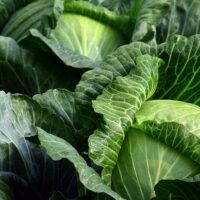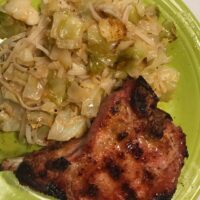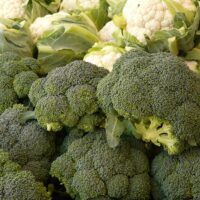Delicious Memories and a Recipe
I recently received a head of green cabbage as a gift. Now, I’m not one to buy cabbage, although I like it on occasion.
Roasting it seemed like a good idea, so I sliced it in rather thin wedges, placed the wedges in a single layer on my pan, and sprinkled with extra virgin olive oil, kosher salt, garlic powder, and red pepper flakes.
After about 30 minutes, in a 400 degree oven, I had some pretty tasty roasted cabbage.
A day or so later I was faced with the leftovers. Recalling that my Slovakian grandma used to make a noodle and cabbage dish that was wonderful, I decided to make something similar. 
I sautéed the leftover roasted cabbage in a skillet with some cooked rice noodles. Pretty good stuff. This was a quick and easy dish that brought back a delicious memory.
Last week, I decided to make the more traditional dish. It took a bit more time and was definitely worth it. I had plenty for a couple meals as a side dish.
This is a rediscovered comfort food for me. It’s not quite like grandma’s, as she used to even make her noodles! It’s good enough, and I find it to be very delicious and satisfying.
Here’s my version of a recipe that I found. Hope you enjoy it!
Haluski—Cabbage and Noodles
- 1/3 cup butter or so, divided (or Earth Balance Buttery Sticks)
- 1 small head of cabbage, cored and cut into 1-inch pieces
- 1 large onion, chopped
- Salt and pepper to taste
- A couple handfuls of your favorite noodles, cooked according to package directions and drained
- Sweet paprika (optional)
Preheat oven to 300 degrees F. Melt about half of the butter in a large skillet over medium-low heat; cook and stir onions until translucent, 5 to 10 minutes. Cook and stir remaining butter and cabbage into onions until cabbage is softened but not browned, 5 to 8 more minutes. Season with salt and black pepper. Add the cooked noodles and stir gently to combine. Place the mixture into a buttered casserole dish. Sprinkle with paprika, if desired. Bake in the preheated oven until golden brown on top, 30 to 40 minutes.
Notes: I used Thai Kitchen stir-fry rice noodles and they worked great. The suggested noodle is medium-wide egg noodles. Of course, you could use homemade noodles if you have them. Adjust the amount of noodles according to your personal preference. 
In case you’re wondering, cabbage belongs to the same group as broccoli, Brussels sprouts, and kale, known as the Brassica family.
It is inexpensive, easy to store, and is an excellent source of vitamins C and K, folate, and a great source of protective phytochemicals.
I highly recommend that you give Haluski (some version) a try. You may have a new comfort food to help get you through the chilly months ahead.
Sending love,
Carol
“I grew up in Austria, and for me real comfort food is Wiener Schnitzel. Wiener Schnitzel and mashed potatoes because it reminds me of my youth… It reminds me when I grow up and it feels very comforting.”—Wolfgang Puck





